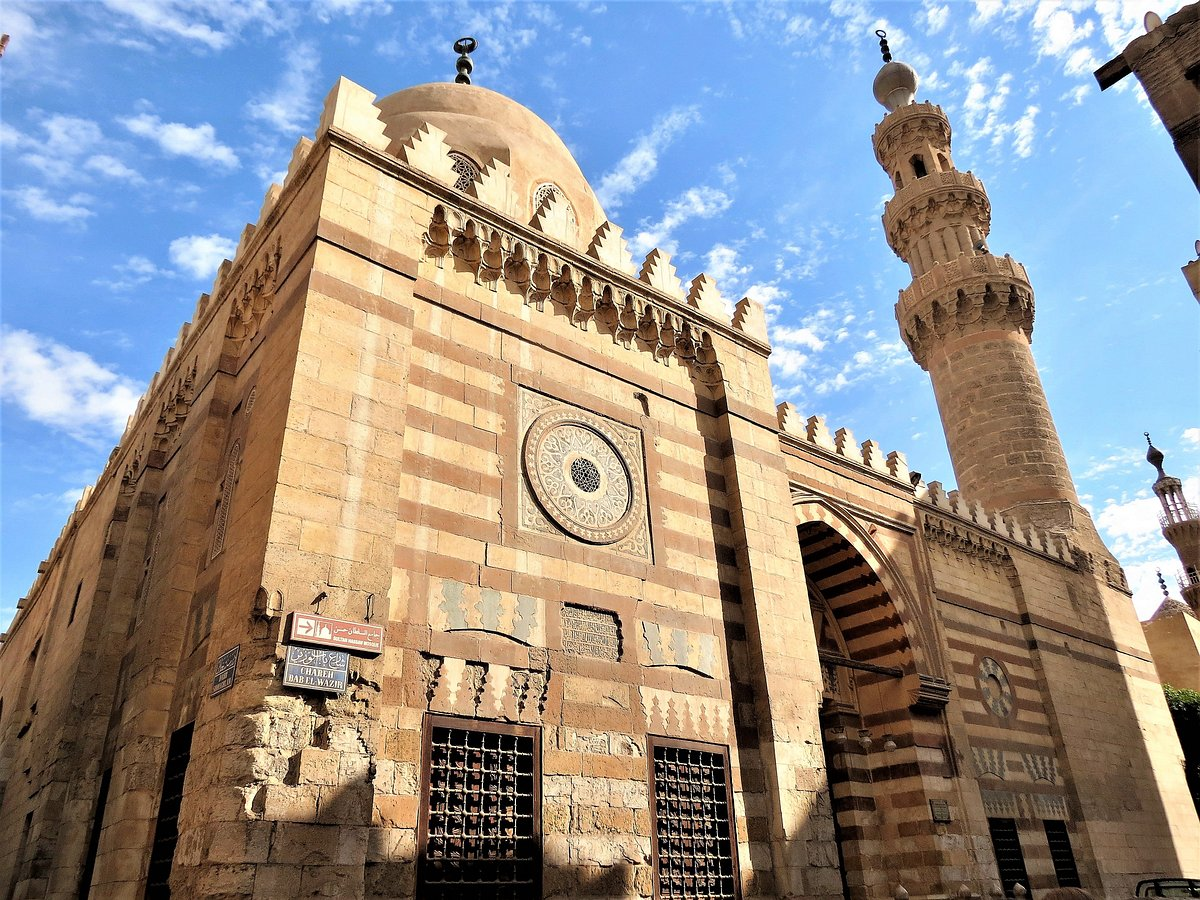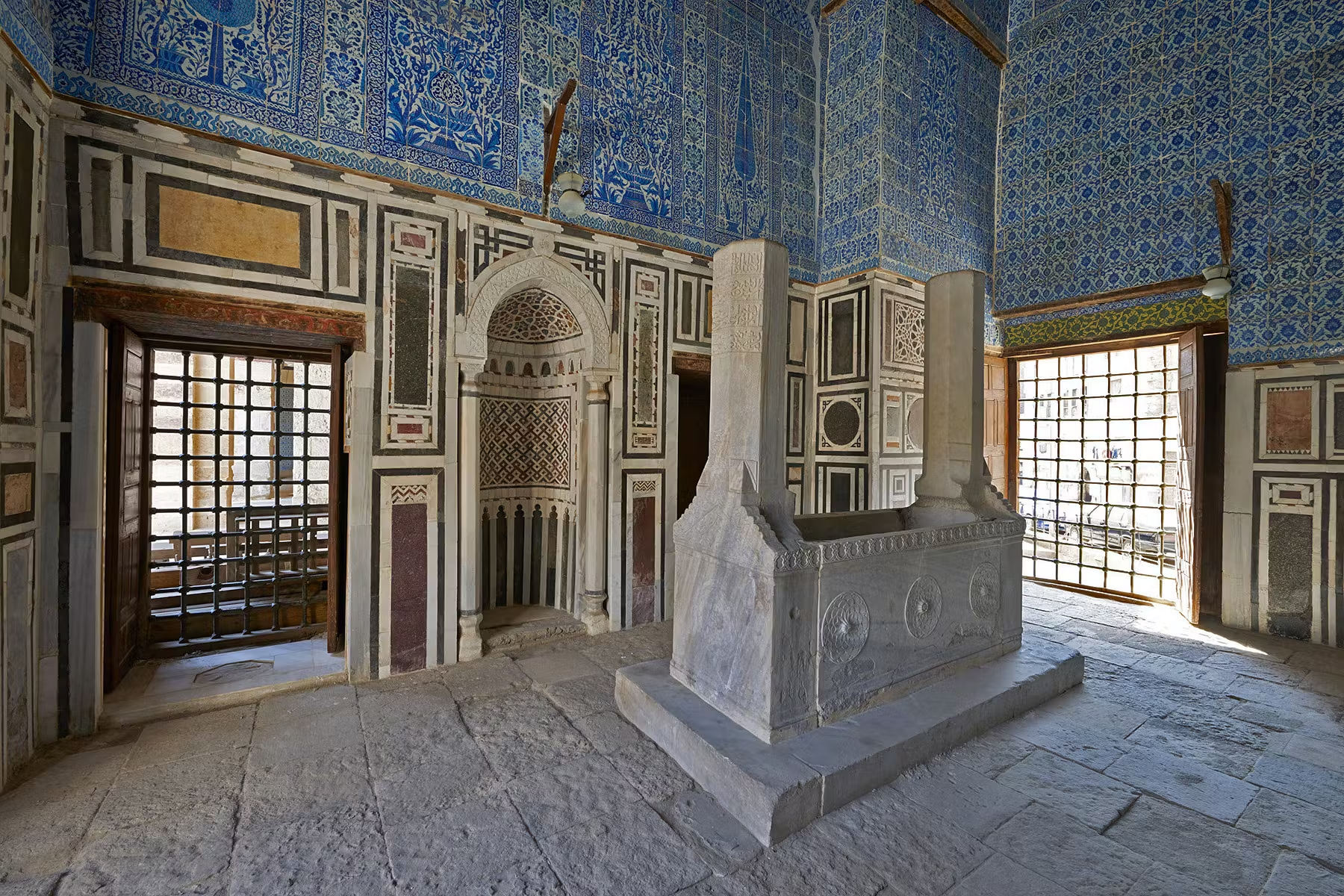In a city as ancient and alive as Cairo, beauty often hides in whispers, not headlines.
You’ve heard of the Pyramids. You’ve seen Sultan Hassan.
But tucked deep in the dusty alleys of Darb al-Ahmar, away from the tour buses and noise, lies a place that doesn’t just tell a story — it feels like one:
Welcome to the Aqsunqur Mosque — or as locals and lovers of history know it, Egypt’s Blue Mosque.
A History Etched in Silence
The mosque was founded in 1347 by Shams al-Din Aqsunqur, a Mamluk emir. It served as a traditional space of worship, built in a time of strength and expansion. But centuries later, after earthquakes and neglect, the mosque was lovingly restored by Ibrahim Agha al-Mustahfizan, an Ottoman official who had suffered great personal losses.
In rebuilding the mosque, Ibrahim didn’t simply reconstruct walls — he gave the structure a new soul. He lined the interiors with imported Ottoman Iznik tiles, in vivid shades of blue, turquoise, and cobalt. These were not merely decorative. They were an offering. A memorial. A spiritual gesture rendered in color and silence.

Where Blue Becomes a Language
When you step inside Aqsunqur, you’re stepping into something far more than stone. You’re stepping into a space where blue becomes a feeling.
The entire qibla wall is draped in hand-painted ceramic tiles from Turkey — floral motifs, calligraphy, and rhythmic arabesques that feel more like prayers than patterns. Sunlight filters in through wooden lattice windows, catching the tilework and casting soft reflections across the marble floor. The effect is otherworldly.
You don’t just see this mosque. You feel it in your chest. You slow down. You listen. And in the silence, you begin to sense the grief, reverence, and deep love that shaped it.

A Place of Stillness and Rest
Aqsunqur is also a mausoleum. The founder and several family members are buried within the mosque’s walls. Their tombs are simple and unmarked, resting beneath ceilings of painted wood and surrounded by centuries of quiet prayer.
This adds a sacred weight to the space. It's not grandeur that defines it — it's tenderness. You are, quite literally, walking through a place where devotion was carved into stone and grief was tiled into beauty.
How to Visit Aqsunqur Mosque
Location: Bab al-Wazir Street, Darb al-Ahmar, Cairo
Opening hours: Typically open to visitors during daylight hours
Best time to visit: Early morning or late afternoon for soft, dramatic light
Nearby sites: Ibn Tulun Mosque, Gayer-Anderson House, Bab Zuweila, Tentmakers’ Market
This mosque is best explored slowly — as part of a guided walking tour through Islamic Cairo. It pairs beautifully with visits to Cairo’s lesser-known spiritual sites, giving a deeper, more soulful context to the city’s architectural history.
To experience it properly, consider booking a private tour focused on Cairo’s hidden gems and spiritual landmarks.